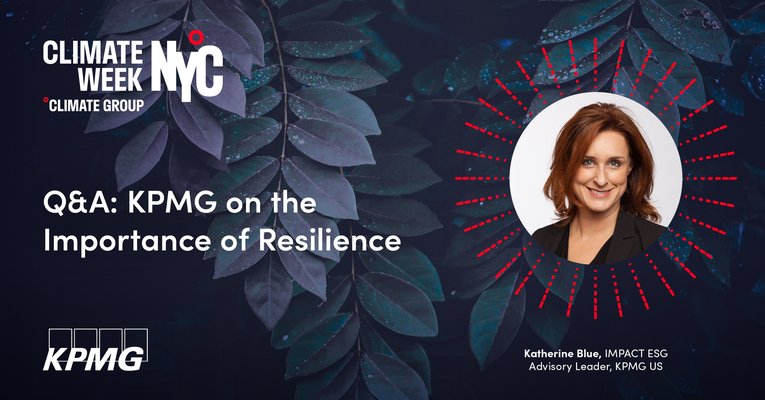Given the need to bring down emissions to at least 50 percent by 2030, what actions are you taking now to cut your carbon footprint?
Our commitment is to achieve net-zero carbon emissions by 2030 while also achieving a 50% reduction of direct and indirect GHG emissions. Importantly, these net-zero goals are verified by the Science Based Target initiatives aligned with a 1.5-degree Celsius trajectory.
To meet these ambitions, we are taking a holistic total-firm approach to address what we consider our most material environment concern, climate change. This requires a big effort, recognizing that our travel, energy consumption, water usage, supply chain decisions, and other sustainability factors are all interconnected.
At its core, our approach is working to decarbonize our operations through technological deployment, better monitoring and measurement, modified internal and external procedures, and factoring the cost of carbon into business decisions.
As part of our commitment to be net zero by 2030, in collaboration with KPMG International, we established an internal price on carbon. This internal price applies to our Scope 1, 2, and 3 emissions and will operationalize sustainable behavior. Further, the fee will fund green investments that decarbonize our operations, such as renewable energy, lighting retrofits, technological deployment, energy efficiency measures, and the purchase of high-quality verified carbon offsets.
Additionally, to power our operations, we committed to sourcing 100% renewable energy. For the past three years, we have met this goal, procuring 100% of our energy from renewable sources through the purchase of Green-e certified Renewable Energy Certificates (RECs). We also own and operate a 500 kW solar installation on our Montvale, New Jersey campus.
We also find its critical to look beyond our walls. For example, we found 72% of our real estate is in the vicinity of key biodiversity areas. To address this and other issues facing the communities in which we operate, a significant component of this strategy is fostering relationships with other environmental leaders.
For example, in collaboration with the Arbor Day Foundation, we plant a tree for every new hire as a symbol of the positive impact we want all our people to leave behind. We also work with GRID Alternatives, a nonprofit that works to build community-powered solutions to climate change by advancing economic and environmental justice through renewable energy. Our support has helped install over 2,000 kW of solar power for underserved communities.
How can companies best navigate the unprecedented risks of the climate crisis?
When companies examine their climate risks, three dimensions should be analyzed to effectively strategize, organize implantation, and unlock new value for all stakeholders. These risks are physical, transition, and consumer.
-
Physical risks include the direct risks to existing facilities, supply chains, transport infrastructure, energy and water supplies. This also applies to employees, customers and communities with more extreme and unpredictable weather events.
-
Transition-related risks can affect an organization’s capital given further volatility in energy prices as we shift from fossil fuels to renewables, with some companies and investors running the risk of being left with stranded assets. One area within transition risks that merits specific interest is consumer risk. As consumers voice preferences for more sustainable products and services and organizations meet the demands of consumers and other stakeholders.
As companies engage with these risks, aligning on data and technology is central to unlock value. It’s essential that companies bring this mindset, focusing on meeting growing compliance requirements and achieves a competitive advantage in the marketplace for talent, investors, and customers.
Where should companies begin when it comes to building resilience?
As with any core strategy, assessing the landscape is the first step an organization should take. Conduct vulnerability assessments for extreme weather and other risks, and scenario analyses to identify and quantify these risks. Embedding climate risk measurement into firm-wide financial and risk management will also help provide clarity to organizations on where adjustments and investments can be made.
Because investments in resilience can have a cost-benefit ratio between 2:1 and 10:1, estimated by the World Business Council for Sustainable Development, taking serious action on building resilience can pay for itself in the long term.
Organizations should consider a range of investments, from strengthening, expanding and diversifying supply chains, increasing insurance coverage, establishing disaster risk reduction and recovery plans, and participating in local climate adaptation and resilience efforts. It’s also an opportunity to expand into new markets, developing new products and services to support mitigation and adaption efforts.
